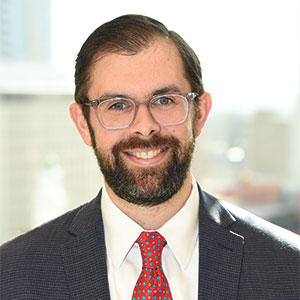By Ryan C. Hardy, Spencer Fane LLP
“The Court first observed that, by statute, a debtor may proceed under subchapter V unless and until the Court determines ineligibility.”
Missouri Bankruptcy Court Holds Debtor Must Be Currently Engaged in Commercial or Business Activities to Be Eligible to Make Subchapter V Election
In In re Thurmon, the Bankruptcy Court for the Western District of Missouri held that debtors who had ceased operation of their business and sold its assets pre-petition were not “engaged in commercial or business activities,” and therefore could not proceed under new subchapter V of Chapter 11. Despite its order, the Court nonetheless signaled its willingness to confirm the debtors’ subchapter V plan with a modification, although the debtor had never sought approval of or distributed a disclosure statement as required for non-subchapter V Chapter 11 debtors.
The Court’s main holding — that a debtor must be currently engaged in business or commercial activities to be eligible to proceed under subchapter V — rested on a plain reading analysis. The Court noted that the phrase “engaged in” is used in other parts of the Code and has been construed, at least implicitly, to mean “currently engaged in.” Additionally, a native English speaker typically would understand “engaged in” to mean “currently engaged in” rather than “currently or formerly engaged in.” In so holding, the Court acknowledged that its determination was opposite the holdings of each reported case considering the issue. Practitioners should reasonably expect that this dispute will play out in bankruptcy courts across the country, particularly since it was the Office of the United States Trustee that raised the issue here; we can reasonably expect the UST to do so elsewhere as well.
The UST argued that since the debtors were not eligible to proceed under subchapter V, their plan could not be confirmed. The UST reasoned the plan was unconfirmable because there was no disclosure statement and it did not provide for payment of UST fees. The Court agreed that the plan would need to be modified to provide for payment of UST fees, because those fees would be owed going forward, but disagreed that it could not be confirmed without a disclosure statement.
The Court agreed that the plan would need to be modified to provide for payment of UST fees, because those fees would be owed going forward, but disagreed that it could not be confirmed without a disclosure statement.
The Court first observed that, by statute, a debtor may proceed under subchapter V unless and until the Court determines ineligibility. Here, the debtors had filed their plan and secured the votes of all impaired classes before the UST brought its eligibility challenge to a head. Further, although the UST had objected to eligibility, it had not previously demanded that the debtors file a disclosure statement.
The Court thus found the UST had waived its argument about the disclosure statement.
Moreover, the Court found the plan substantially complied with section 1125 by supplying creditors with “adequate
information.” As evidence, the Court pointed to the fact that “all voting impaired creditors voted in favor of the plan and no party requested the court make § 1125 applicable” as would be necessary for section 1125 to apply in a subchapter V case. This, the Court reasoned, meant creditors concluded they had sufficient information.
Finally, the Court noted that when acceptances or rejections are not required and are not solicited, it may be the case that no disclosure statement should be required. One might wonder whether this authority, if widely adopted, could eliminate the need for disclosure statements in certain prepackaged plans where non-consenting creditor classes are not impaired and thus not entitled to vote.







